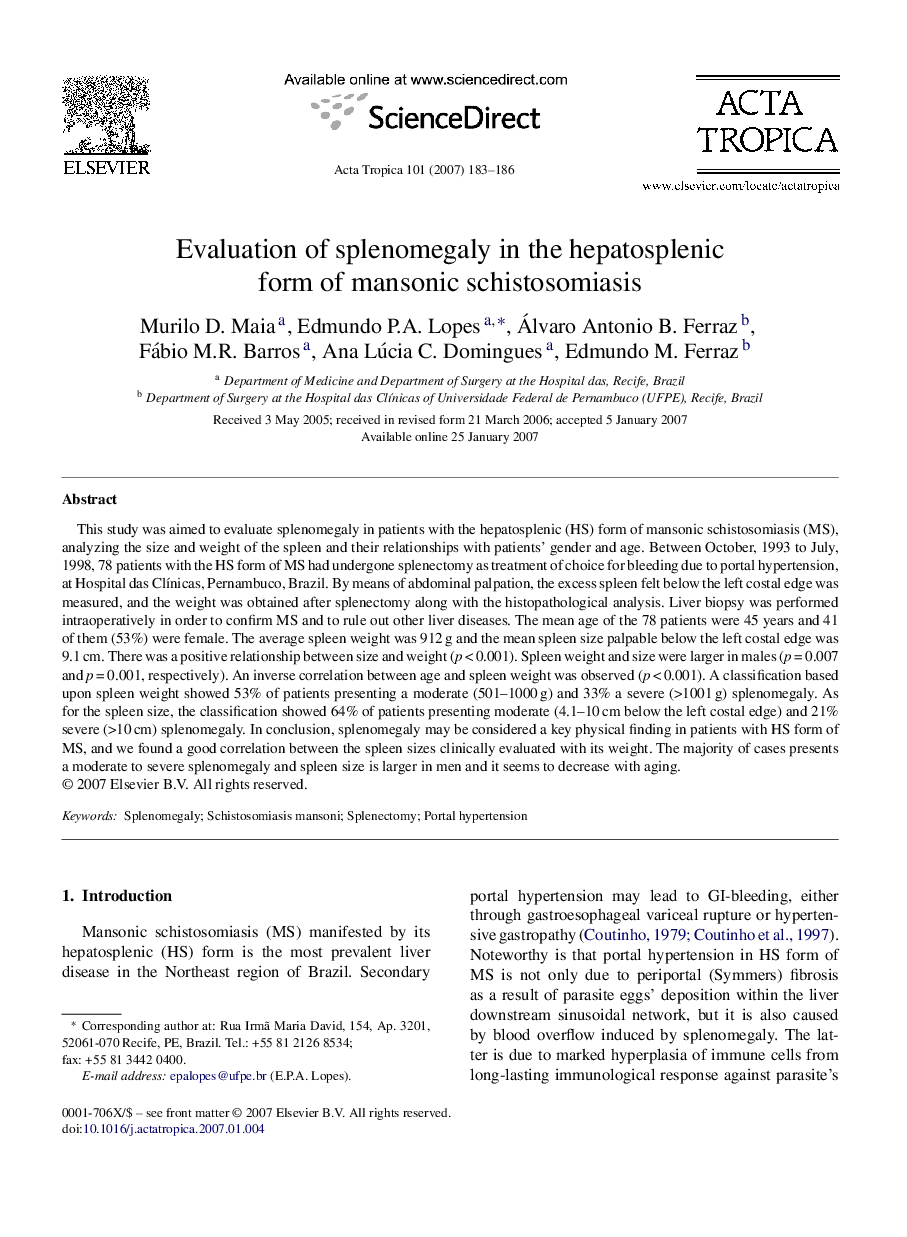| Article ID | Journal | Published Year | Pages | File Type |
|---|---|---|---|---|
| 3394584 | Acta Tropica | 2007 | 4 Pages |
This study was aimed to evaluate splenomegaly in patients with the hepatosplenic (HS) form of mansonic schistosomiasis (MS), analyzing the size and weight of the spleen and their relationships with patients’ gender and age. Between October, 1993 to July, 1998, 78 patients with the HS form of MS had undergone splenectomy as treatment of choice for bleeding due to portal hypertension, at Hospital das Clínicas, Pernambuco, Brazil. By means of abdominal palpation, the excess spleen felt below the left costal edge was measured, and the weight was obtained after splenectomy along with the histopathological analysis. Liver biopsy was performed intraoperatively in order to confirm MS and to rule out other liver diseases. The mean age of the 78 patients were 45 years and 41 of them (53%) were female. The average spleen weight was 912 g and the mean spleen size palpable below the left costal edge was 9.1 cm. There was a positive relationship between size and weight (p < 0.001). Spleen weight and size were larger in males (p = 0.007 and p = 0.001, respectively). An inverse correlation between age and spleen weight was observed (p < 0.001). A classification based upon spleen weight showed 53% of patients presenting a moderate (501–1000 g) and 33% a severe (>1001 g) splenomegaly. As for the spleen size, the classification showed 64% of patients presenting moderate (4.1–10 cm below the left costal edge) and 21% severe (>10 cm) splenomegaly. In conclusion, splenomegaly may be considered a key physical finding in patients with HS form of MS, and we found a good correlation between the spleen sizes clinically evaluated with its weight. The majority of cases presents a moderate to severe splenomegaly and spleen size is larger in men and it seems to decrease with aging.
